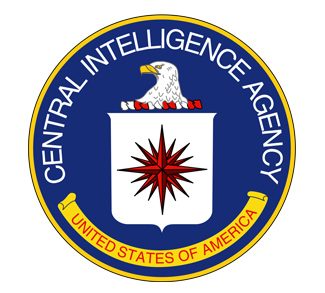Summary
There has been much discussion of further North American integration under a ‘Security and Prosperity Partnership’ between Canada, The United States and Mexico. Business think-tanks campaign for harmonized policies, citizens groups call for public consultation and warn of a secret agenda, while
politicians publicly seem to do little at all. This article is a primer on the issue of North American integration with an emphasis on Canada and the United States.
Analysis
Montebello Trilateral Talks
The August 21 and 22, 2007 SPP trilateral talks held in Montebello, Quebec were the most recent of an ongoing series of discussions between Canada, the United States and Mexico to further integrate North America. Business interest groups like the Canadian Council of Chief Executives are calling for an amalgamation of trade, border security and defense in order to ensure Canadian access to American markets. Citizens groups including advocates for democracy, environmental stewardship and labour have protested their exclusion from the discussions and are demanding full public consultation.
Canadian Prime Minister Stephen Harper has attempted to downplay the talks suggesting they deal only with minutia like ‘harmonizing regulations on jellybean production’. A number of citizens groups and individuals, however, argue that a secret agenda is at play.
Citing calls for a ‘New World Order’ by George Bush Sr., and more recently Gordon Brown, stolen elections in Mexico and the United States, and the multitude of documented terrorist operations and assassinations carried out by Western intelligence agencies, opposition groups fear that the SPP talks will be hijacked by powerful interests seeking to centralize power and erode democracy.
Such concerns were not eased when police provocateurs were caught on video at the August 21, 2007 protest. They were pushing demonstrators and aggressively approaching riot police with bandanas over their faces, one holding a large rock, in the area of the demonstration allocated by protesters for families, the elderly and others wishing to avoid confrontation. Initially denying that the provocateurs were police officers the Quebec Provincial Police conceded the fact when public outrage surged over a video posted on You Tube showing the men wearing identical boots as the riot police (see below). They claimed that the disguised police officers were in the crowd to prevent violence rather than incite it.
An overview of Canadian-American Trade Relations and exposed Western covert operations gives context to citizen concerns over the SPP and further North American integration.
North American Integration and Free Trade
Trade between Canada and the United States has been a contentious issue ever since the United States declared independence from Britain in 1776. Modern free trade between the countries can be said to have begun in 1988 with the FTA.
1988 Canada-US Free Trade Agreement
The FTA was an agreement between Canada and the United States to provide Canada with unhindered access to American markets and grant the United States access to Canada’s energy, natural resources and cultural industries.
In the agreement Canada retained rights to exclude cultural industries, healthcare and education. Water was also excluded from the agreement.
The agreement eliminated barriers to the trade of goods and services including tariffs, liberalized investment restrictions and established administration and dispute resolution procedures. It also created a foundation for further bilateral and multilateral agreements.
1994 North American Free Trade Agreement
Six years later the FTA was expanded and replaced by NAFTA, which eliminated most remaining trade tariffs.
NAFTA resulted in a significant increase in trade between Canada and the United States and an increase in aggregate wealth that tended to be distributed unevenly, often benefiting business and harming workers and farmers. It also led to the integration of some industries, most notably the automotive industry based largely in Ontario and Michigan.
NAFTA prevents Canada from reducing its exports of energy and basic petrochemicals if it would result in the disruption of normal supply channels or reduce exports as a percentage of total Canadian supply.
Chapter 11, a section of the Agreement that was meant to prevent governments from appropriating private property, has since been interpreted by the NAFTA dispute resolution panel to permit corporations to sue government if regulations against the sale of items deemed to be dangerous or harmful are banned without the availability of conclusive scientific proof that such action is required.
Due to a lack of public support, NAFTA was signed by Canada only after the United States agreed to make the dispute resolution panel decisions binding. In March 2006 the NAFTA panel found that Canadian softwood lumber exports are not subsidized and that American duties were in violation of NAFTA. The United States rejected the binding ruling. Rather than pull out of NAFTA by giving Canada’s six-month notice the Harper government instead chose to concede to the United States and arranged a settlement.
Security and Prosperity Partnership
The SPP is intended to further integration between Canada, The United States and Mexico. Its focus goes beyond trade liberalizations in order to harmonize policies, border control and defense. The precise nature of the SPP has not yet been formally announced but three meetings have been held since March 2005, one in each country, between business and political leaders. The North American Competitiveness Council was created at the second meeting held in Cancun, Mexico in order to determine priorities for the SPP and to facilitate the integration process.
Significant opposition to the SPP has arisen in all three countries. The most common complaints are that it is being planned in secret, bypasses democratic institutions, threatens to erode the power of democratic institutions, and is part of a larger plan to create a North American Union.
The North American Union
In 2004 the Canadian Council of Chief Executives, Council on Foreign Relations (US), and the Mexican Council on Foreign Relations launched The Independent Task Force on North America. In its 2005 report ‘Building a North American Community’ the non-government group calls for, among other things, a common security perimeter and passport with biometric identifiers, the free flow of people within North America, the merging of military operations and intelligence, the integration of energy markets and the review of NAFTA exclusions (i.e. Canadian bulk water exports).
There has also been talk of creating a North American currency called the Amero, which critics argue would cede control of the Canadian dollar and Mexican Peso to the American Federal Reserve.
A Secret Agenda?
Opposition to the SPP and North American integration is commonly based in a cynicism about the intentions of those who claim to be negotiating on behalf of the people in their respective countries.
Opponents cite declared intentions of a ‘New World Order’ that centralizes power, a history of CIA political assassinations and coups in the United States and abroad and false flag operations such as The Gulf of Tonkin, Operation Northwoods and 9/11 as reasons for being skeptical.
Such concerns are compounded by the uncertain state of the American economy due to a large and ongoing expansion of the money supply, high levels of debt and defaults in the sub-prime mortgage market.
Tri-lateral meetings on North American integration have so far resulted in few official declarations but as long as talks are held privately without broad consultation skeptics and opposition groups will continue to campaign against an agreement that they believe is about more than security and prosperity.



